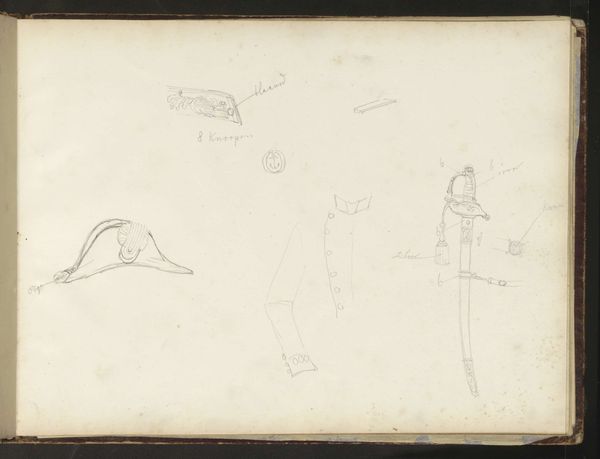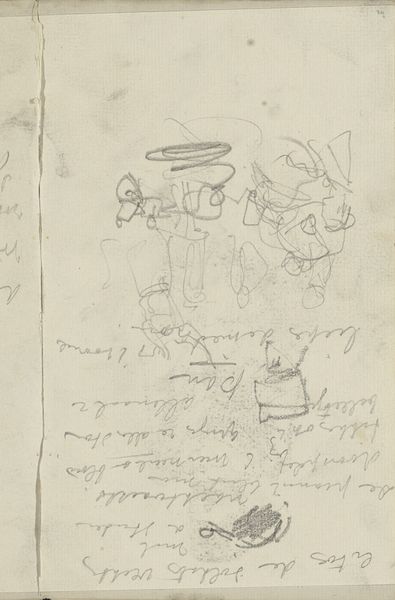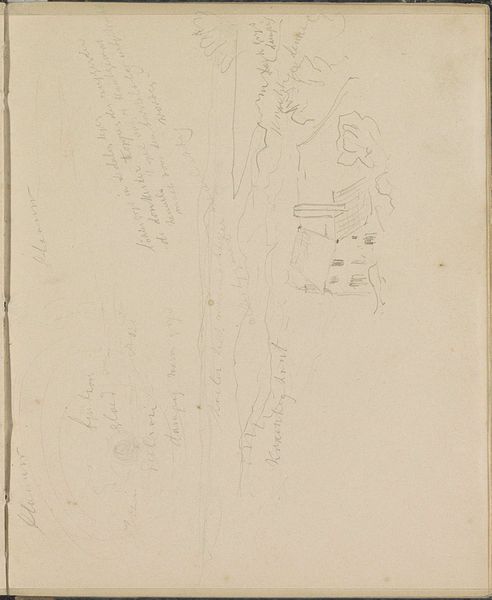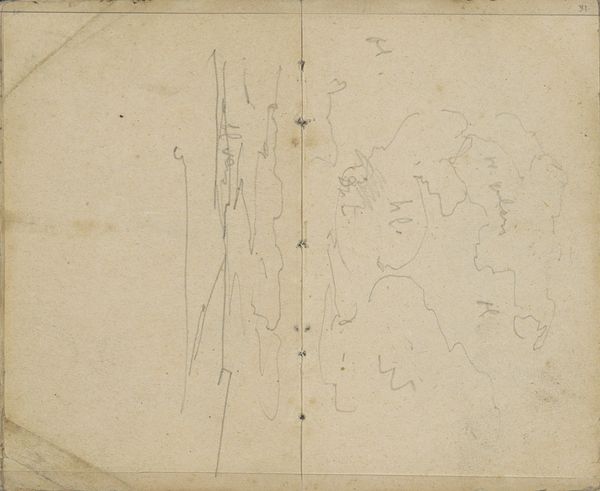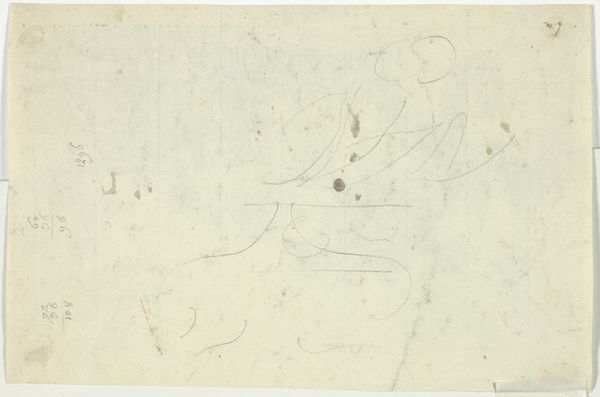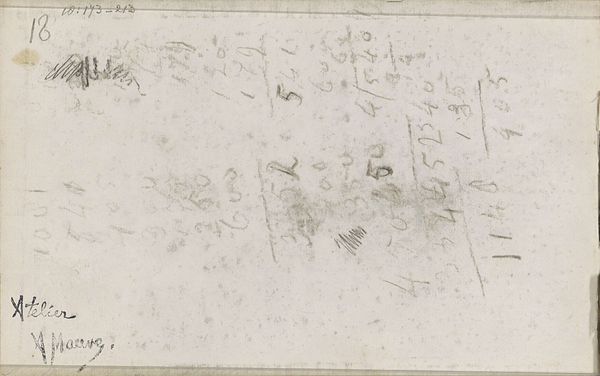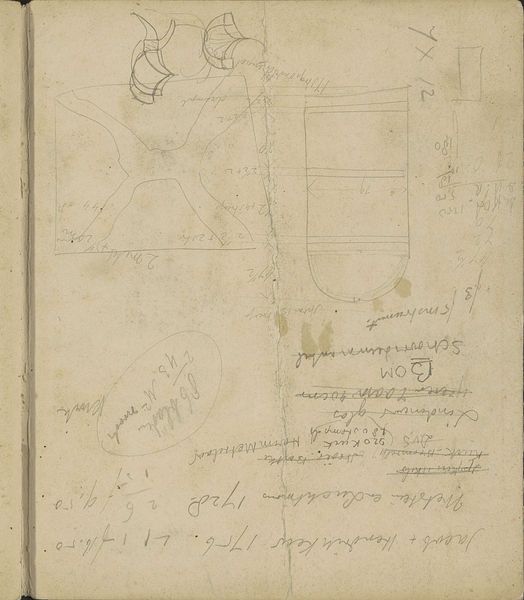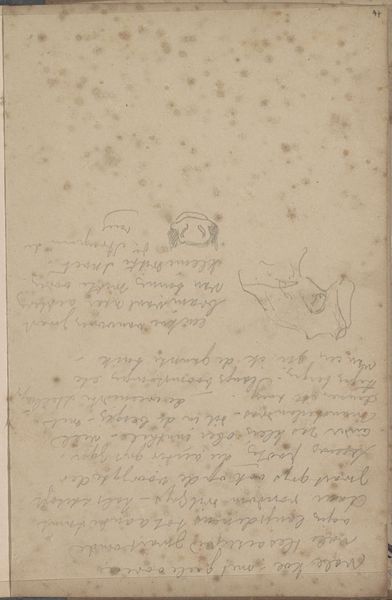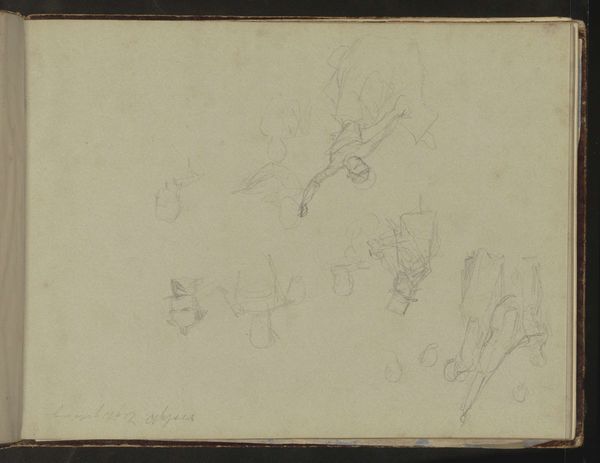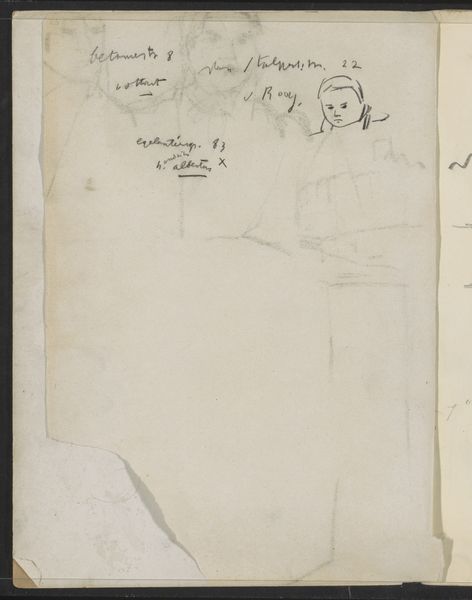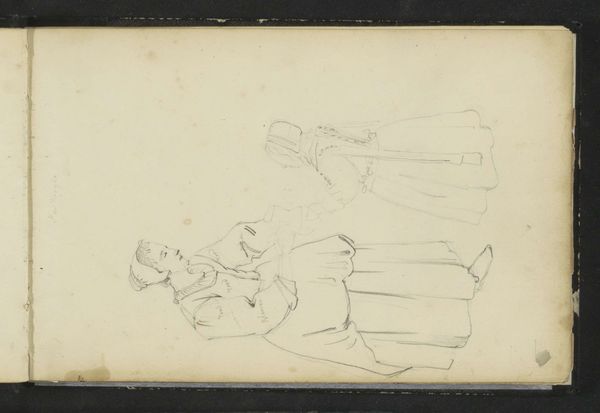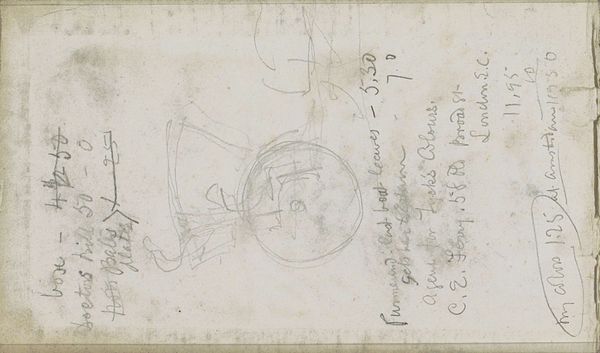
drawing, paper, pencil
#
portrait
#
drawing
#
figuration
#
paper
#
sketch
#
pencil
Dimensions: height 115 mm, width 160 mm
Copyright: Rijks Museum: Open Domain
Editor: Here we have "Man Gezierd Wandelend Tussen Twee Dames," or "Man Decorated Walking Between Two Ladies," by Alfred Michael Roedstad Schmidt, made sometime between 1868 and 1907. It's a pencil drawing on paper, a light sketch. What I find curious is how the central male figure, dressed in what appears to be sailor attire, stands out so distinctly between these two female figures. How do you interpret this work? Curator: It's fascinating how this seemingly simple sketch offers a window into societal expectations around gender and identity. The distinct presentation of the male figure, framed and seemingly protected by the women, hints at prevailing gender roles during that era. Notice the attire – how might his ‘decorated’ sailor’s outfit contrast with the dresses of the two ladies? Does this imply more than just clothing and speak to societal privileges accorded to masculinity, even within the context of childhood? Editor: That’s a great point. I was initially focusing on the composition, but thinking about it through a gendered lens really shifts my perspective. So, is the artist commenting on these power dynamics, or simply reflecting them? Curator: That's precisely the question we need to ask ourselves when examining art from the past. Is the artist complicit in reinforcing these roles, or are they subtly critiquing them? The deliberate composition begs us to ask what the artist means by placing him so distinctly between them. Is this protection, a statement of dominance, or something else? Could this image, from a contemporary perspective, serve as a symbol of how societal structures bolster and position young boys even from youth? Editor: It's amazing how a quick sketch can open up so much discussion about the complexities of gender roles and historical context. It’s far more than just a drawing of three figures. Curator: Exactly. And remember, even a seemingly simple sketch carries the weight of the culture that produced it, urging us to decode those hidden layers. It speaks to the potent and persistent nature of gendered representation in art and beyond.
Comments
No comments
Be the first to comment and join the conversation on the ultimate creative platform.
